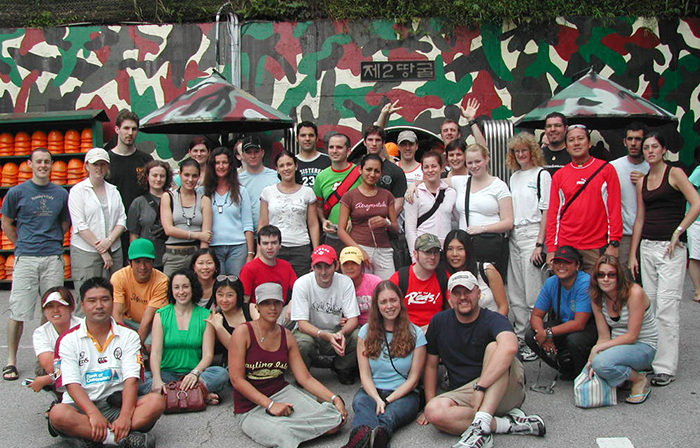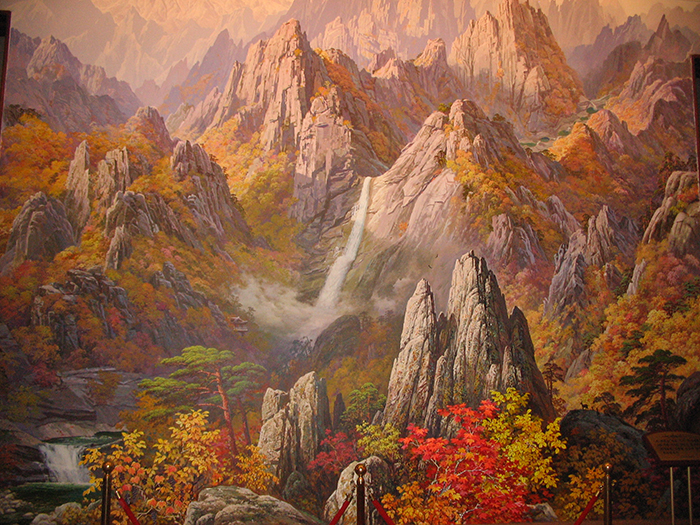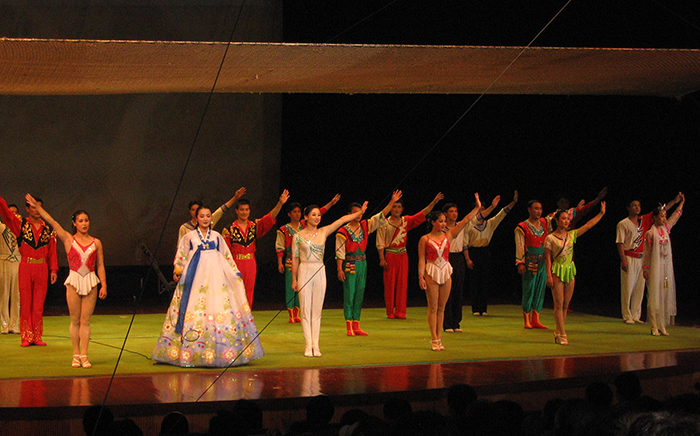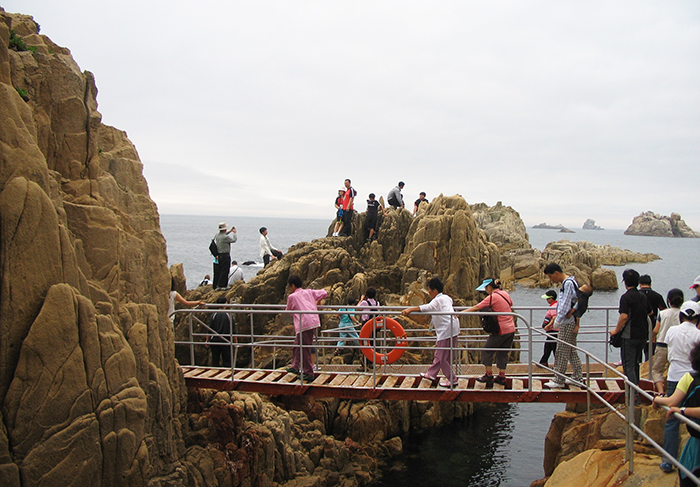Взгляды почетных репортеров
Discovering both sides of DMZ, hopes for a peaceful peninsula
25.04.2018
Both Korean and non-Korean tourists visit the 2nd Tunnel near the DMZ in hopes for peace between the two Koreas.
By Korea.net Honorary Reporter Alfonso L. Delgado from the Philippines
Photos = Alfonso L. Delgado
On my first trip to Korea in 2004, one of things I wanted to do was to visit the Demilitarized Zone, popularly known as the DMZ. I had always thought that being meters from the fences decorated by barbed wire and the 4 km no man’s land, accessorized with countless landmines, was the closest thing to being inside the communist North Korea.
My DMZ dream tour
Unfortunately, on that short visit, my dream DMZ tour remained just that: a dream. Who wouldn’t want to be at the DMZ, right at the border of one of the only divided nations in the world? I would have bragged about it when I flew back to the Philippines that time, and surely, it would have been a story to remember.
Months after I finally settled in Seoul that year, the dream tour came true. Not only that, but I also got to spend a night in a sleepy corner of Cheorwon County that was right next to the DMZ. I went down and walked through the Second Tunnel dug by North Koreans, roamed the Korean Workers’ Party Headquarters Building whose steps still bear the scars of military tanks, and even visited the memorial sites of the Baekmagoji Battlefield.
Crossing the DMZ
All that time as I was thinking of my visit to the DMZ, I never realized that I would be able to top that. In July 2006 I crossed the 4km DMZ on a bus and stepped into North Korea.
Way back then, the Geumgang Resort on the North Korean side of peninsula was opened to tourists. Named after Geumgangsan Mountain, or Diamond Mountain, where it was located, the resort was built by a South Korean conglomerate to enable South Koreans and other nationalities to see the natural beauties of Gangwon-do Province in what is now North Korea. Although it was probably one of the priciest weekend tours I've ever had, it was worth it for the story and, of course, for the bragging rights.
Our tour bus left Seoul Friday night. We arrived at the Donghae Highway Transit Office by early morning after a quick breakfast stop along the way. This border crossing check-point was installed just for the purpose of these tours.
My tour bus was just one of the 20 or so that drove through the DMZ at a slow, uniform speed. With paved roads, the drive was both smooth and eerie, as when we arrived at the northern side, North Korean soldiers were lined up along the way, watching over the buses like cold sentinels in dark uniforms, and with rifles and bayonets.

The Geumgang Hotel boasts a painting of the amazing Geumgangsan Mountain where many people hope to visit freely in the near future.
Diamond Mountain
The Geumgang Resort had hotels, a public bath and spa, and a small plaza with restaurants, convenience stores, and a theater.
Our first stop was a hike through the valleys, rivers, creeks and along the mountainside of Geumgangsan Mountain. With trails rarely visited by humans, it was nature untouched by progress, except, of course, for the occasional giant red engravings on the rocks extolling the leaders of that side of the border.
North Korean Circus
In the afternoon, we were treated to a once-in-a-lifetime experience, a performance by a North Korean circus. The emcee was a North Korean woman whose beauty was only matched by her exquisite Hanbok attire, whose colors and fabrics could only be matched by the best Hanbok makers at the Dongdaemun Fabric Market. I was always told by my Korean friends from the South that the most handsome men on the peninsula are from South Korea while the most beautiful women are from the North. Before that day, I had never seen up-close a woman from the North, but at that moment, as I sat in the theater watching the North Korean woman host the show, I believed the generalization.
I had seen circuses, but this one was the most surreal. The music provided by the musicians, dressed in white long sleeves up in the bleachers, completed the very unique experience watching jugglers, acrobats, trapeze artists and other performers who looked very proud to give the "outsiders" some entertainment they would never get on the southern side of the DMZ.

Watching a circus by North Korean performers is a surreal experience.
Geumgang Beach
When inside the tour bus and passing through villages and guard posts, no picture-taking was allowed. Also, no one was allowed to take photographs of any North Korean, be it a soldier or a civilian. A fine would be imposed on anyone violating that rule. Understandably, nobody dared violate the rule, lest they wanted to be left behind.
On Sunday morning, we were brought to Geumgang Beach. The area was facing east and was littered with big and unique rock formations. We were able to walk around the formations as it was low tide, making it fun for photographs again. We were warned, though, not to point our cameras to a military outpost a couple of hundred meters from where we were.
Since the resort was the venue for the family reunions between South and North Korean families that were separated by the Korean War, heartbreaking photographs of these reunions were posted in the lobby of the transit office, reminding us that, perhaps, when the two Koreas finally unite, these reunions may someday be a thing of the past.

The combination of rocks and the sea at Geumgang Beach makes for some beautiful scenery.
Filipinos in the Korean War
Though my trips to Geumgangsan, the DMZ and to the battlefields of Cheorwon seemed to have accomplished a few of my bucket-list items in Korea, it became a sentimental journey of sorts for a Filipino like me. The Philippines was the first East Asian country to send troops to defend South Korea in June 1950. A contingent of almost 7,500 Philippine officers and soldiers came to fight during those years of conflict, and 112 of them died in the war.
Those brave and gallant Filipinos represented the Philippine Expeditionary Forces To Korea, one of whom was Fidel Ramos. He eventually became the 12th president of the Philippines from 1992 to 1998. Another prominent Filipino who came to Korea at that time was Benigno Aquino, Jr., (1932-1983) who, at 17-years-old, became the youngest correspondent to cover the Korean War. He later became a Philippine senator and the husband of Corazon Aquino, the 11th president of the Philippines from 1986 to 1992 and the father of Benigno Aquino III, the 15th president of the Philippines from 2010 to 2016.
Although Geumgangsan Mountain may be out of reach to you right now, you can still head to Panmunjeom, the DMZ or to historic battle sites in Cheorwon. If you get there, do remember the history and of the gallant people who fought for the freedom and peace that everyone today now enjoys.
Just like everyone else, I visited the sites to discover and to enjoy. Although I arrived at these war sites as a tourist, I left as a proud Filipino.
A peninsula finally at peace
Having lived in Seoul for more than a decade, I've roamed the country and seen the beauty of its people, traditions and sites first-hand, including the regular evacuation drills, learning about the nearest shelters, and listening to everyone’s fear, all because of past provocations from North Korea.
All this fear will disappear soon, I hope.
With the holding of the 2018 Inter-Korean Summit, I, just like everyone else, hope that peace will finally come to the Korean Peninsula because, after all, this is for the good of all the Korean people.
A lasting peace would honor those who have come before, would bring freedom and unity to the present, and prosperity and happiness for generations to come.
wisdom117@korea.kr
* This article is written by a Korea.net Honorary Reporter. Our group of Honorary Reporters are from all around the world, and they share with Korea.net their love and passion for all things Korean.